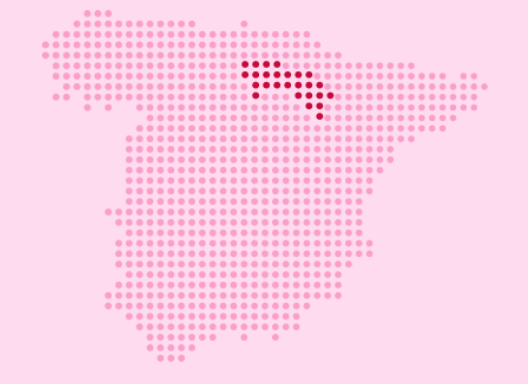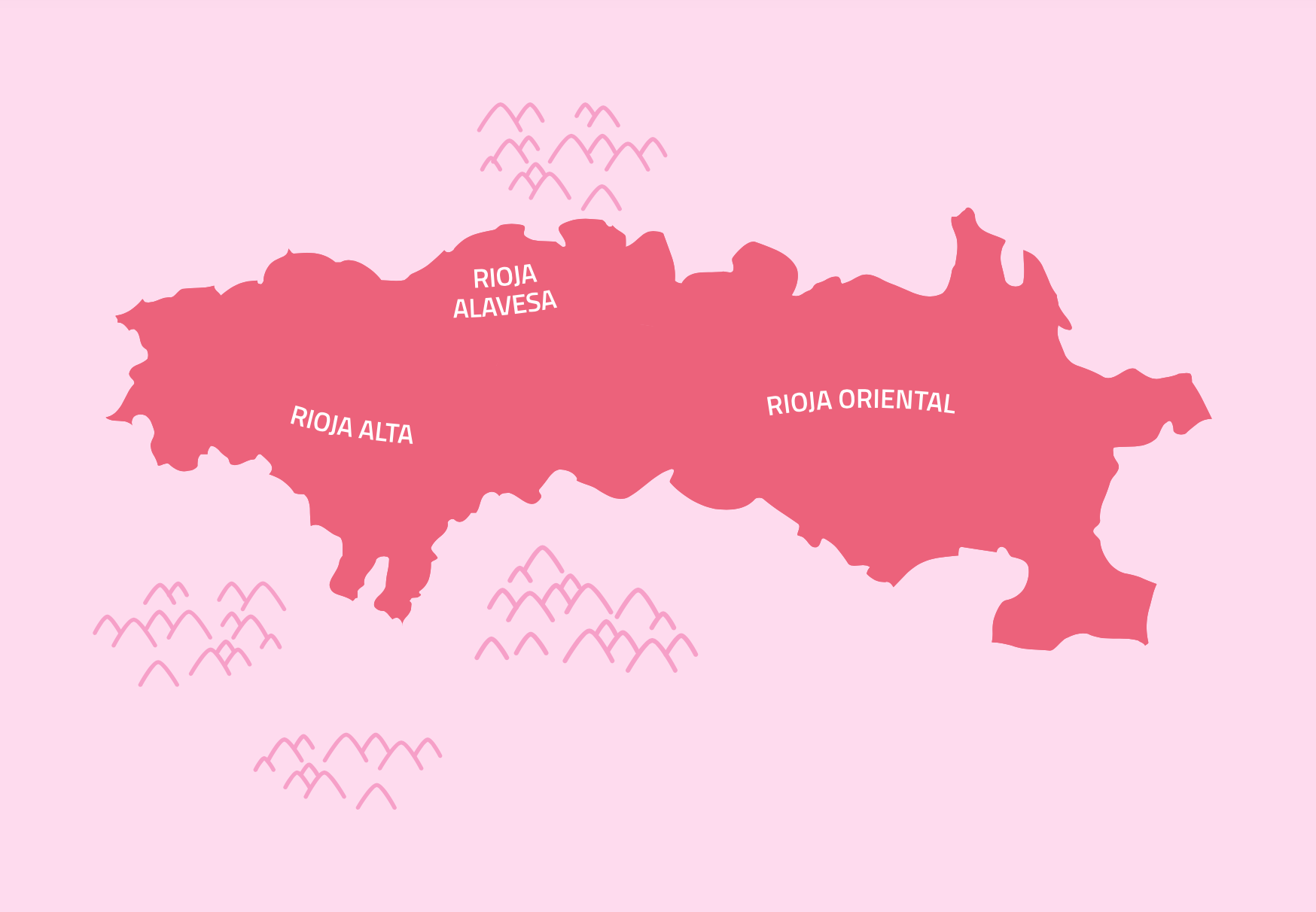Rioja is the most famous of all Spanish wine regions. That is due to several factors. The area has a very long history of viticulture and winemaking. The climate is conducive to high-quality wines. Plus political, economic, and viticultural circumstances at key points in history gave it easy entry to important, international markets.

A Brief History of Rioja
Wine production began in the area we now call Rioja at least 3,000 years ago. It would have been brought to the Iberian Peninsula by the Phoenicians, an eastern Mediterranean civilization which created settlements and trading centers throughout Mediterranean lands during the early Iron Age (which began around 1200 BC). The world’s first wine traders, the Phoenicians also taught grape cultivation and winemaking to some of their trading partners, among whom native Iberians were prominent.
Some 900 years later, the area that’s now Rioja fell under Roman control. They stepped up organized viticulture, wine quality, and production volume, though not with an aim toward exports. Wine production has continued mostly unabated in Rioja since then, even through the period of Muslim rule.
The wine industry expanded substantially as Christianity and its Catholic monks came to dominance during the Middle Ages. By the late 1200s, Rioja was selling wine abroad, and eventually to the wealthy—and thirsty—English and Dutch. The wine trade was so important to Rioja by 1560 that the region establish regulations to ensure the purity of their wines and to prevent other regions from hijacking the Rioja “brand.” Those efforts were redoubled in 1787 with the establishment of the Royal Economic Society of Rioja Winegrowers.
In the mid-19th century, a series of civil wars caused some Spaniards to flee the country. Two men from Rioja, Marqués de Riscal and Marqués de Murrieta, went to Bordeaux. While there, they learned a lot from local vigneron. The pair ultimately brought this knowledge back to Rioja, revolutionizing its wine industry in both quality and volume.
Fortuitously, this all happened just before phylloxera began to devastate important French winegrowing regions. The sudden uptick in demand to replace French wine, plus improved accessibility as train travel came to Rioja, positioned it perfectly for success. Some Frenchmen even emulated Riscal and Murrieta in reverse, setting up their own wineries in Rioja.
In 1925, Rioja became Spain’s first, legally recognized Denomination of Origin for wine. When new classifications were introduced in 1991, Rioja was immediately upgraded to DOCa (Denominacion de Origen Calificada) status. Only one DOCa has been added since, Priorat in 2009.
 Rioja DOCa highlighted within Spain
Rioja DOCa highlighted within Spain
Climate and Geography
Some sources identify Rioja as a Mediterranean climate zone. It is not. Neither is it a maritime climate, despite being much closer to the Atlantic than the Mediterranean. Instead, Rioja has a substantially continental climate. That’s because it is surrounded by mountains, which effectively block it from intense maritime influences.
Summers in Rioja are hot, sunny, and without much rain. That’s preceded by a chilly spring, which inhibits an early start to growing seasons. Fortunately, autumn is generally amenable to extended hang time for the grapes. Winters are cold and snow is common.
The Rioja DOCa has three sub-regions: Rioja Alavesa, Rioja Alta, and Rioja Oriental. [Until very recently, the latter was called Rioja Baja.] The climate does vary between these zones. The first two are further north and absorb more Atlantic humidity than Rioja Oriental, which is to the southeast and drier, slightly influenced by the Mediterranean Sea.

Grape Varieties
Tempranillo, which is the dominant variety of Rioja, accounts for more than 75% of all planted acres. However, it tends to produce a lean varietal wine there. Blending with Garnacha Tinta (Grenache), Mazuelo (Carignane), and/or Graciano adds roundness, fruit, and alcoholic potential that extends fermentations, building complexity. Of those three, Garnacha Tinta is the most important companion to Tempranillo.
Viura (Macabeo) is the main white wine grape of Rioja. However, there are ninewhite varieties that can be legally bottled as varietal wines. Among them, the best known are Chardonnay, Garnacha Blanca, Sauvignon Blanc, and Verdejo.
Wine Styles - Red
Tinto (red wine) makes up about 90% of all production in Rioja. However, depending on production method, a tinto may include 5-15% white grapes. Historically, Rioja tinto is not only a blend of varieties, but of the sub-regions too. This allowed more consistent wines from one vintage to the next. Regional designates, either villages or zones, are a fairly new phenomenon there. Single-vineyard (Vinédos Singulares) wines have only been allowed since 2017 and the vineyard needs to be treated as a brand, rather than a simple designation.
Some producers now make varietal wines from the red grapes typically used for blending. Those wines can be very nice. And they certainly help wine enthusiasts better understand the character of those grapes in Rioja and how they might influence a blend.
Tradition, dating back to early 19th century wars between France and Spain, sees American oak being the primary wood for aging vessels. This led to aromas of dill being a key marker for Rioja during blind tastings.
In the past decade or so, French oak has become more popular. The purposes are to create a more international style and to reduce the prominence of oak-derived flavors in the wine. While some producers do this with 100% French oak barrels, others alternate French and American staves in individual barrels or put American heads on barrels made of French staves. Regardless of the barrel regime, more than half of all Rioja tinto spends some time in wood.
There are four categories for Rioja tinto, based on minimum allowable length of aging at the winery. Note that the minimums are higher in Rioja than in other regions of Spain
- Cosecha ............... no aging requirement
- Crianza ................ 12 months in barrel, 2 years overall
- Reserva ................12 months in barrel, 6 in bottle, 36 months overall
- Gran Reserva ...... 24 months in barrel, 24 months in bottle, 60 months overall
The long aging of Reserva and Gran Reserva used to create wines that were not just softened, but sometimes oxidized and high-toned. That has changed in recent years, even more than has oak regime. Many, probably most, producers now strive for freshness to suit today’s international audience.
Wine Styles - White and Rosé
Each of these segments represents 5% of Rioja’s total wine production by volume. The white (blanco) wines may be made from any of the nine allowable white wine grapes. The wines may be 100% varietal or a blend of any combination.
The rosé (rosado) wines can be a “traditional” rose, made solely from red grapes. However, they can also be blended rosé, with as little as 25% of the mix coming from red grapes. Clearly, based on the number of varieties, ratios, and growing sites available, rosado in Rioja represent a very wide range personalities.
Blanco and rosado share a category matrix for aging, similar to that of tinto.
- Cosecha .............. no aging requirement
- Crianza ................ 6 months in barrel, 2 years overall
- Reserva ............... 6 months in barrel, 24 months overall
- Gran Reserva ...... 6 months in barrel, 48 months overall

Try some Rioja wines! JJ Buckley has an excellent selection.
2016 Bodegas Sierra Cantabria Finca El Bosque
2016 Contino Rioja Vina del Olivo
2015 Muga Torre Muga
2015 Artadi Valdegines
2010 La Rioja Alta Vina Ardanza Reserva Seleccion Especial
2006 Bodegas Faustino Faustino I Gran Reserva
JJ Buckley guest blogger Fred Swan is a San Francisco-based wine writer, and educator. His writing has appeared in The Tasting Panel, SOMM Journal, GuildSomm.com, Daily.SevenFifty.com, PlanetGrape.com, and his own site, FredSwan.Wine (formerly NorCalWine) among others. He teaches at the San Francisco Wine School. Fred is founder of Wine Writers' Educational Tours, an annual, educational conference for professional wine writers. He also leads private wine tours and conducts tastings and seminars in person and via Zoom. Fred’s certifications include WSET Diploma, Certified Sommelier, California Wine Appellation Specialist, Certified Specialist of Wine, French Wine Scholar, Italian Wine Professional, Napa Valley Wine Educator, Northwest Wine Appellation Specialist, and Level 3 WSET Educator. He's been awarded a fellowship by the Symposium for Professional Wine Writers three times.
Images courtesy of RiojaWine.ccom